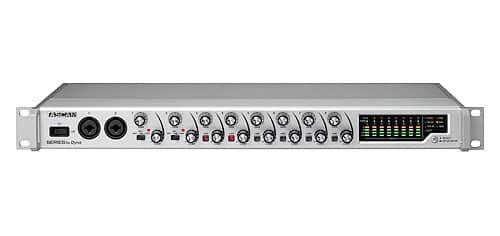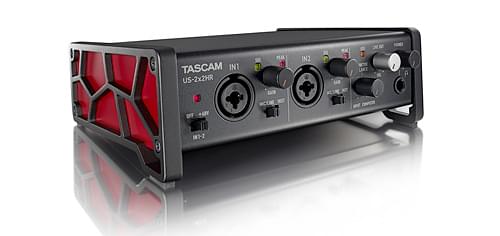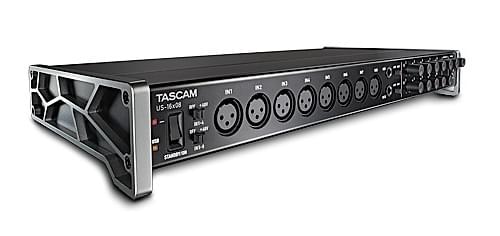SERIES 102i
USB Audio/MIDI Interface With DSP Mixer (10 in, 4 out)
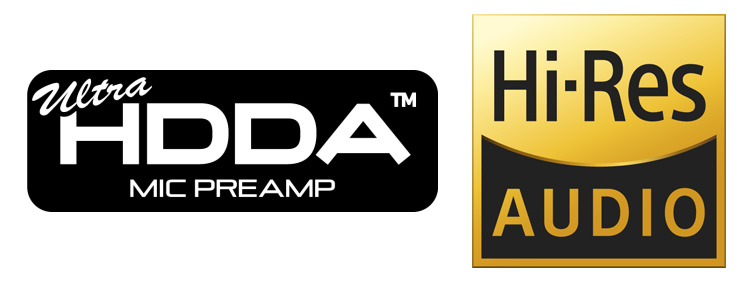 The two analogue mic/line/instrument combo inputs are fitted with Tascam’s transparent, natural-sounding, low-noise Ultra-HDDA mic preamps and individually switchable phantom power (+48 volt). A maximum of ten inputs (four at 192 kHz) are available when using the multi-channel optical port which can accept up to eight channels of audio input from an ADAT- or S/MUX-compatible device. The SERIES 102i also offers dual headphone outputs with dedicated level control and two balanced 6.3-mm line outputs for versatile monitoring. And you can connect your favorite MIDI devices to the rear-panel MIDI input and output to use them with your recording software.
The two analogue mic/line/instrument combo inputs are fitted with Tascam’s transparent, natural-sounding, low-noise Ultra-HDDA mic preamps and individually switchable phantom power (+48 volt). A maximum of ten inputs (four at 192 kHz) are available when using the multi-channel optical port which can accept up to eight channels of audio input from an ADAT- or S/MUX-compatible device. The SERIES 102i also offers dual headphone outputs with dedicated level control and two balanced 6.3-mm line outputs for versatile monitoring. And you can connect your favorite MIDI devices to the rear-panel MIDI input and output to use them with your recording software.
The angled tabletop design gives easy access to all front-panel controls. You can quickly adjust the monitor output level with a large front-panel Monitor knob, and use the handy Monitor Balance control to mix live input with computer playback for zero-latency overdubs.
Start Your Projects Immediately With Bundled Software

While free, easy-to-use Tascam control software helps you manage faders, processing and routing of any audio input (analogue, optical and USB) to any audio output, the interface comes also with Steinberg Cubase LE DAW software for Windows and macOS and Cubasis LE app for iPad. With IK Multimedia AmpliTube guitar effects/modeling software and T-RackS mastering software you get the tools you need to deliver high-quality, polished recording projects. The IK Multimedia software is provided in both free standing and plug-in versions for complete, versatile recording, mixing, and mastering.
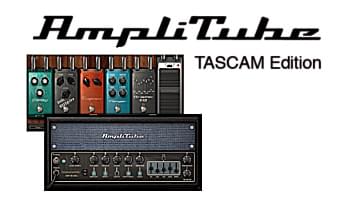
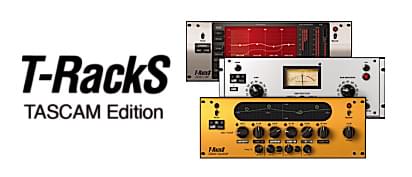
iZotope award-winning plug-in included
 Neutron Elements provides an easy, fast way to a professional mix – and it is included with every purchase of a Tascam SERIES interface. Neutron brings mix workflows to the 21st century with four modern mixing tools in one mothership plug-in, featuring mix assistance powered by machine-learning with unrivaled quality and speed.
Neutron Elements provides an easy, fast way to a professional mix – and it is included with every purchase of a Tascam SERIES interface. Neutron brings mix workflows to the 21st century with four modern mixing tools in one mothership plug-in, featuring mix assistance powered by machine-learning with unrivaled quality and speed.
Expandable Input Capability to Grow Into
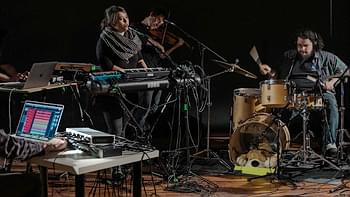
Easily add more input channels to accommodate future growth by using external microphone preamplifiers with S/MUX optical inputs to record drums, guitars, keyboards, vocals, and more. Each S/MUX optical port can accept up to 8 channels of audio input from an ADAT- or S/MUX-compatible device.
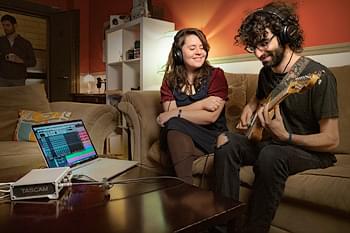 Dual Headphones Monitoring
Dual Headphones Monitoring
The SERIES interface has two individual headphones amplifiers powerful enough for dual headphones monitoring.
Control Software for Matrix Mixing, Effects Processors and More

Free, easy-to-use Tascam Control software manages faders, processing and the ability to route any audio input (analogue, optical and USB) to any audio output.
Built-in DSP Effects and Processing
A DSP input and output mixer is complemented with digital reverb, compressor, phase invert and four-band EQ for each channel. Having this processor included internally eliminates all latency issues and takes the load off the computer allowing it to process the audio more efficiently.
 Mobility
Mobility
Tascam SERIES interfaces support tablets and other mobile devices and are compatible with many applications to meet your recording needs now and in the future.
What is Direct Monitoring?
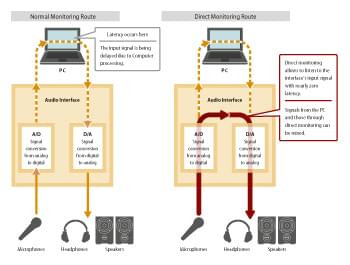
When recording audio with a computer, input signals are usually routed through the interface, the computer, and then back to the interface’s outputs. While signals pass the A/D and D/A converters in your interface without any noticeable delay, audio processing by the computer can lead to a clearly audible, disturbing time lag. As a result, you hear your voice or instrument later than the backing tracks played back on the computer and you are hardly able to perform in sync with the playback signal.
By using direct monitoring, input signals are not only sent to the computer but also directly to the outputs of your interface. This allows you to hear your input signal with virtually no delay (or latency) and always in sync with the playback material when recording or performing.
Tip: When recording the signal, mute the track you are recording to. Otherwise you would also hear your performance delayed from the recording track.
Features at a glance
- Provides up to ten audio inputs and two audio outputs to a Windows or Mac computer or iOS device
- Audio resolution up to 192 kHz / 24 bit
- USB Audio Compliance 2.0 for iOS connection
Hardware features
- Two analogue mic/line inputs on XLR/TRS balanced combo connectors
- High-grade Ultra-HDDA (High Definition Discrete Architecture) microphone pre-amps with ultra-low noise (EIN: –127 dBu)
- High-quality audio input circuits for low-noise recording
- Individually switchable 48-Volt phantom power on XLR inputs
- Each TRS input can be switched to instrument-level for direct recording of guitar or bass
- Gain controls, signal and peak indicators on each analogue input
- Optical multi-channel audio input for expansion by a maximum of eight additional inputs
- ideally suited for use with the Tascam SERIES 8p Dyna microphone preamplifier
- S/MUX format with support for high sampling rates (ADAT-compatible)
- 8 inputs at 44.1/48 kHz
- 4 inputs at 88.2/96 kHz
- 2 inputs at 176.4/192 kHz
- Two monitor/line outputs (balanced TRS) with level control
- Direct monitor option for low-latency monitoring
- Monitor mix control for adjusting the level balance between signals from external devices and signals from the computer
- Two 6.3-mm standard headphones outputs with level control (18 mW per channel)
- MIDI input, MIDI output
- Power supply by dedicated PS-P1220E AC adapter (included)
- Rugged all-metal chassis
Software features
- In-house developed driver for Windows devices ensures stable operation with low latency
- Built-in DSP with mixer, routing and effects accessible through dedicated settings panel
- Compressor and 4-band EQ with low-cut filter on each input channel
- Phase invert, Bypass, Solo, channel Link and Mute buttons on each input channel
- Four Aux sends, switchable pre/post (Aux 1 used for internal reverb)
- Reverb effect with five presets and adjustable pre delay, reverb time, diffusion and return level (Reverb can be used up to 96 kHz only)
- Master section with Stereo fader, Aux Master controls and Mute button
- Comfortable routing of output channels
- Bundled with Cubase LE (64-bit Windows application), compatible with Cubasis LE
- Bundled with iZotope Neutron 3 Elements, AmpliTube and T-Racks plug-in effects
- Automatic update function available for software, driver and firmware updates
- Compatible with major DAW software (Pro Tools, Live, Cubase, Studio One, GarageBand etc.)
Supported Operating Systems
Windows
- Windows 11 (version 25H2)
- Windows 11 (version 24H2)
- Windows 11 (version 23H2)
- Windows 11 (version 22H2)
- Windows 11 (version 22H1)
- Windows 10 (version 22H2)
- Windows 10 (version 21H2)
- Windows 10 (version 21H1)
- Windows 8.1
- Windows 7
Mac
- macOS Tahoe (v26)
- macOS Sequoia (v15)
- macOS Sonoma (v14)
- macOS Ventura (v13)
- macOS Monterey (v12)
- macOS Big Sur (v11)
- macOS Catalina (v10.15)
- macOS Mojave (v10.14)
- macOS High Sierra (v10.13)
- macOS Sierra (v10.12)
iOS
- iOS 26 / iPadOS 26
- iOS 18 / iPadOS 18
- iOS 17 / iPadOS 17
- iOS 16 / iPadOS 16
- iOS 15 / iPadOS 15
- iOS 14 / iPadOS 14
- iOS 13 / iPadOS 13
- iOS 12
- iOS 11
- iOS 10
Specifications
| General ratings | |
|---|---|
| Sampling frequencies | 44.1 kHz, 48 kHz, 88.2 kHz, 96 kHz, 176.4 kHz, 192 kHz |
| Quantization bit depth | 16/24-bit |
| Analogue audio inputs | |
|---|---|
| Mic inputs (when the input switch set to MIC/LINE) | XLR-3-31 (1: GND, 2: HOT, 3: COLD) |
| Input impedance | 1.5 kΩ |
| Nominal input level | −64 dBu (0.0005 Vrms, GAIN knob at MAX) −6 dBu (0.388 Vrms, GAIN knob at MIN) |
| Maximum input level | +10 dBu (2.45 Vrms) |
| Maximum gain | 58 dB |
| Instrument inputs (when the input switch is set to INST) | 6.3-mm standard TS jack (Tip: HOT, Sleeve: GND) |
| Input impedance | ≥1 MΩ |
| Nominal input level | −64 dBV (0.0006 Vrms, GAIN knob at MAX) −6 dBV (0.501 Vrms, GAIN knob at MIN) |
| Maximum input level | +10 dBV (3.162 Vrms) |
| Maximum gain | 58 dB |
| Line inputs (when the input switch set to MIC/LINE) | 6.3-mm TRS jack (Tip: HOT, Ring: COLD, Sleeve: GND) |
| Input impedance | 10 kΩ |
| Nominal input level | −54 dBu (0.0015 Vrms, GAIN knob at MAX) +4 dBu (1.228 Vrms, GAIN knob at MIN) |
| Maximum input level | +24 dBu (12.282 Vrms) |
| Maximum gain | 58 dB |
| Analogue audio outputs | |
|---|---|
| Line outputs (balanced) | 6.3-mm TRS jack (Tip: HOT, Ring: COLD, Sleeve: GND) |
| Output impedance | 230 Ω |
| Nominal output level | +4 dBu (1.228 Vrms) |
| Maximum output level | +20 dBu (7.75 Vrms) |
| Headphone outputs (PHONES) | Standard 6.3-mm stereo jack |
| Maximum output power (THD+N ≤0,1 %, 32 Ω) | 45 mW + 45 mW |
| Output impedance | 51.5 Ω |
| Load impedance | 16–600 Ω |
| Digital audio inputs/outputs | |
|---|---|
| OPTICAL IN (S/MUX) connector(s) | Optical (JEITA RC-5720C) |
| Signal format | Multi-channel optical format (Supports S/MUX when 88.2 kHz, 96 kHz, 176.4 kHz or 192 kHz.) |
| Other inputs and outputs | |
|---|---|
| USB | 4-pin USB B-type |
| Transfer rate | USB 2.0 Hi-speed (480 MBit/s) |
| MIDI input | 5-pin DIN |
| Format | Standard MIDI format |
| MIDI output | 5-pin DIN |
| Format | Standard MIDI |
| Audio performance | |
|---|---|
| Mic amp EIN (equivalent input noise) | ≤−129 dBu |
| Frequency response (mic/line input to computer) | |
| At 44.1/48 kHz | 20 Hz – 20 kHz, +0/–0.4 dB (JEITA) |
| At 88.2/96 kHz | 20 Hz – 40 kHz, +0/–0.8 dB (JEITA) |
| At 176.4/192 kHz | 20 Hz – 80 kHz (JEITA) |
| S/N ratio | 109 dB (Mic input to Computer, Gain knob at minimum, 20-kHz low-pass filter, A-weighted) 110 dB (Computer to Line output, MONITOR knob at maximum, 20-kHz low-pass filter, A-weighted) |
| Distortion (THD + N) | 0,0016 % (Mic input to Computer, 1 kHz sine wave, Gain knob at minimum, 20-kHz low-pass filter) 0,0023 % (Line input to Computer, 1 kHz sine wave, Gain knob at minimum, 20-kHz low-pass filter) 0,0014 % (Computer to Line output, 1 kHz sine wave, MONITOR knob at maximum, 20-kHz low-pass filter) |
| Crosstalk | ≥100 dB (MIC/LINE input to LINE output 1-2, 1 kHz sine wave, gain knob at minimum) |
| Computer hardware requirements | |
|---|---|
| Windows | Windows computer with a USB port that supports at least USB 2.0 or USB 3.0 |
| CPU/processor speed | 2 GHz or faster dual core processor (x86) |
| Memory | 2 GB or more |
| Mac | |
| Supported operating systems | Mac with a USB port that supports at least USB 2.0 or USB 3.0 |
| CPU/processor speed | 2 GHz or faster dual core processor (operation confirmed with Intel and Apple Silicon M1 or M2) |
| Memory | 2 GB or more |
| iOS | Apple iOS device |
| Supported audio drivers | Windows: USB Audio Class 2.0, ASIO 2.2, WDM (MME), MIDI Mac: Core Audio, Core MIDI iOS device: Core Audio for iPhone |
| Power supply and other specifications | |
|---|---|
| Power | DC 12 V AC adapter (PS-P1220E) |
| Power consumption | 7.2 W |
| Dimensions (W × H × D) | 186 mm × 65 mm × 160 mm |
| Weight | 1.1 kg |
| Permissible operating temperature range | 5–35 °C |
Design and specifications subject to change without notice.
Page last modified: 2025-12-17 09:01:52 UTC









